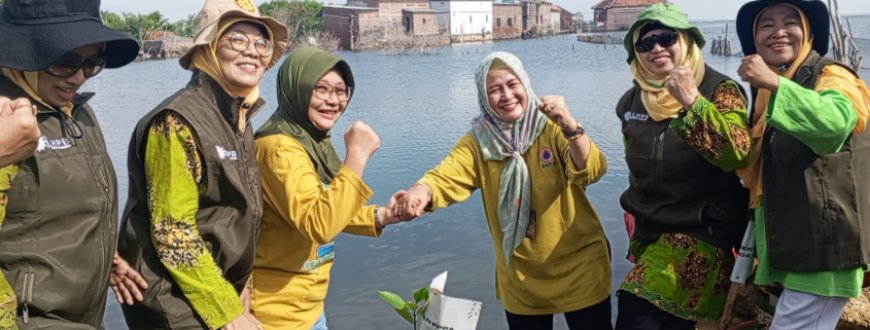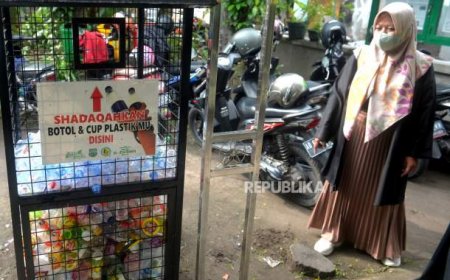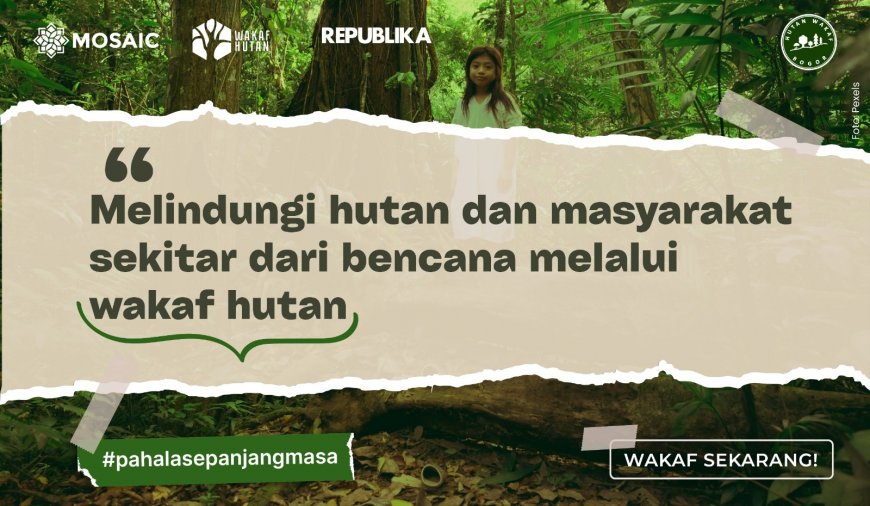Research: Indonesians are still not familiar with 'Green Islam' movements
This study identified 142 Green Islamic organizations or communities in Indonesia

JAKARTA — PPIM UIN Jakarta research recently shows that the majority of Indonesians are not familiar with Green Islam issues initiated by various Islamic communities in Indonesia. In its survey, PPIM found that most respondents did not know about issues related to the Islamic movement and the environment such as ecological boarding schools (87.85 percent), MUI fatwas on the environment (69.62 percent), and plastic waste management policies (82.96 percent).
Most respondents were also unfamiliar with environmentally related autonomous organizations initiated by Nahdlatul Ulama such as the Nahdliyin Front for the Sovereignty of Natural Resources (90.07 percent). The same happened when they were not aware of Muhammadiyah 'green' autonomous organizations such as the Kader Hijau Muhammadiyah (88.47 percent).
Testriono, Research Coordinator of the Green Islamic Movement in Indonesia, revealed that the Green Islam movement in Indonesia still faces various challenges that make this movement not yet developed into a large movement that is widely known and has a significant impact.

“According to the findings of this PPIM research, there are several contributing factors, such as the Islamic Green movement which is still fragmented and tends to focus on local issues around them. In addition, some organizations have not been able to optimize the resources they have, while others do experience resource limitations,” Testriono said at the launch of the research results at Artotel Gelora Senayan, Jakarta, Tuesday, August 27, 2024.
In addition, Testriono added, another challenge of the development of Green Islam in Indonesia is that there is a knowledge gap between activists and constituents, where the environmental messages conveyed have not been fully understood or accepted by the wider public. Finally, the involvement of women in the Green Islam movement has not been maximized although their role is very important in expanding the influence of the Green Islam movement in Indonesia.
The study identified 142 Green Islamic organizations or communities in Indonesia, categorized into three typologies: conservationists, policy campaigners, and mobilizers. The majority of Green Islam groups are structurally affiliated under the two largest Islamic mass organizations in Indonesia, namely NU and Muhammadiyah. Many of them work on a local rather than national and international basis, and are mostly religious organizations, rather than NGOs, communities, and coalitions.
Green Islam activism clearly uses religious identity in designing its strategies and work programs. For example, the Aceh Forest, Nature, and Environment Community (HaKa) empowers women scholars to spread the message of Green Islam through lectures in mosques and study forums in Aceh communities. In addition, Aisyiyah provides environmental education in Muhammadiyah schools. There is also the Nahdliyin Front for Natural Resources Sovereignty (FNKSDA) which collaborates with local communities in East Java in advocating agrarian conflict between local farmers and plantation companies. Others, such as AgriQuran, make use of social media to reach a wider audience, particularly young people, in order to promote the practice of Green Islam.
According to PPIM UIN Jakarta Executive Director, Didin Syafruddin, the research is designed to empower religious leaders and religious-based environmental activists, as well as provide a platform for policymakers to exchange experiences and learnings in efforts to protect the environment and address climate change. “We hope that this program can spread the meaning of the Green Islam movement, which is one of the efforts to raise public awareness about the dangers of environmental damage and climate change and become a real step towards the creation of a green and sustainable Indonesia,” said Didin Syafruddin.
Based on this study, PPIM offers several recommendations. First, the need to expand cooperation for the preservation of the environment. In this regard, government institutions such as the Ministry of Environment and Forestry (MOE) and the Ministry of Religious Affairs can play a significant role to make the Green Islam agenda a public agenda. Secondly, the need to strengthen independence. In many cases, funding factors are one of the main obstacles for the Islamic Green movement. To address this problem, Green Islam can use the waqf as an endowment fund to support environmental conservation initiatives.
Third, strengthen the role of women in environmental issues. The study found that women's involvement in the Green Islam movement could extend the reach and impact of environmental activism to society. Unfortunately, not many Green Islamic organizations or communities have involved women in their activism. Fourth, the integration of Green Islam in the policy direction of the Ministry of Religious Affairs. In this case, the Ministry can make Green Islam agenda a new priority agenda in the policy direction of the Ministry's Strategic Plan 2025-2029 and adopt Green Islam strategy and work program in its policy direction.







